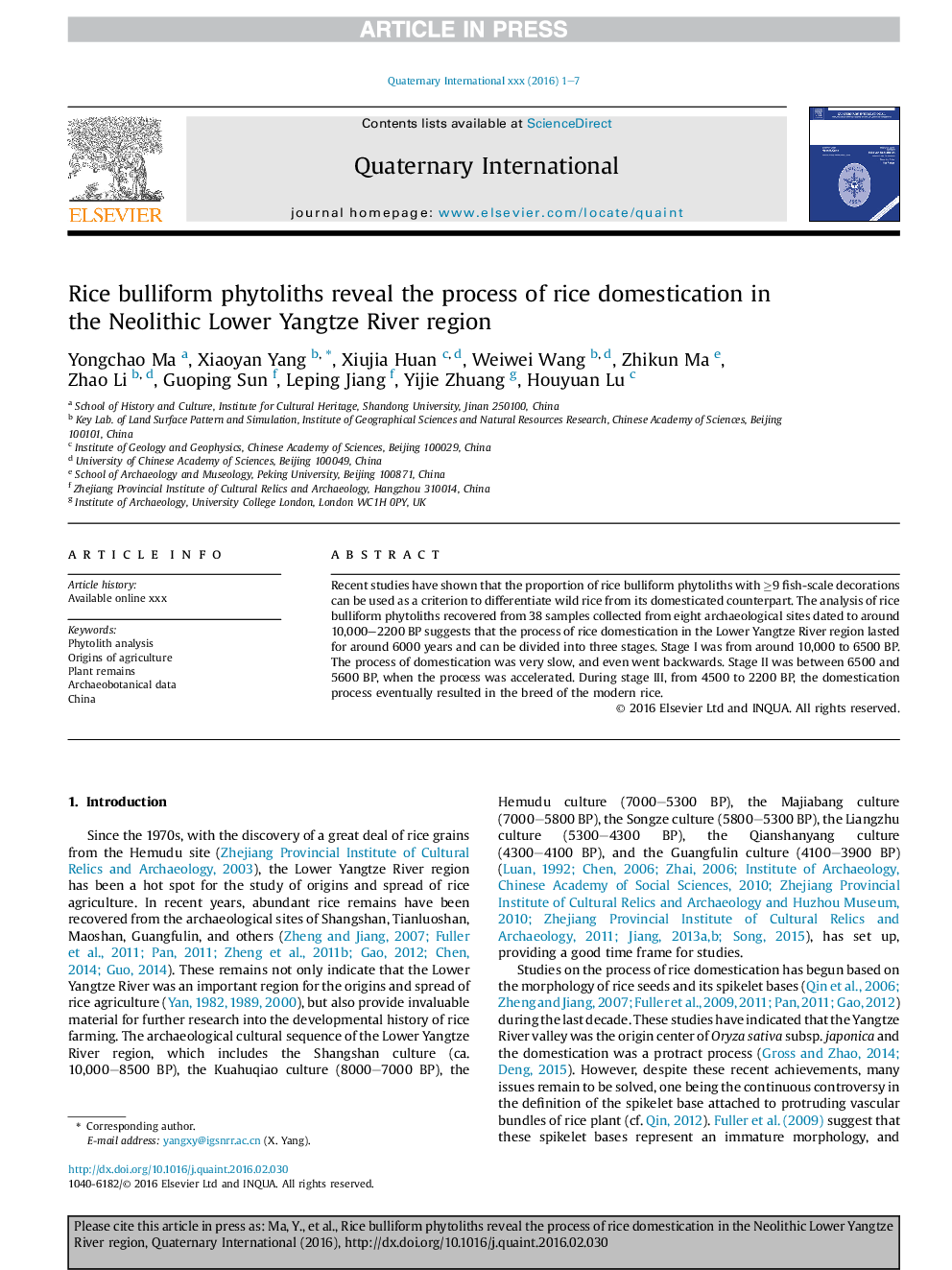| Article ID | Journal | Published Year | Pages | File Type |
|---|---|---|---|---|
| 5114114 | Quaternary International | 2016 | 7 Pages |
Abstract
Recent studies have shown that the proportion of rice bulliform phytoliths with â¥9 fish-scale decorations can be used as a criterion to differentiate wild rice from its domesticated counterpart. The analysis of rice bulliform phytoliths recovered from 38 samples collected from eight archaeological sites dated to around 10,000-2200 BP suggests that the process of rice domestication in the Lower Yangtze River region lasted for around 6000 years and can be divided into three stages. Stage I was from around 10,000 to 6500 BP. The process of domestication was very slow, and even went backwards. Stage II was between 6500 and 5600 BP, when the process was accelerated. During stage III, from 4500 to 2200 BP, the domestication process eventually resulted in the breed of the modern rice.
Related Topics
Physical Sciences and Engineering
Earth and Planetary Sciences
Geology
Authors
Yongchao Ma, Xiaoyan Yang, Xiujia Huan, Weiwei Wang, Zhikun Ma, Zhao Li, Guoping Sun, Leping Jiang, Yijie Zhuang, Houyuan Lu,
